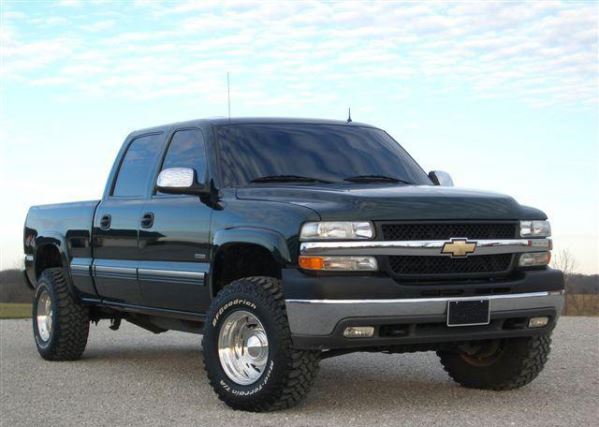So you’re a Chevy guy (or gal), huh? Even if you’re not, you’ve probably noticed that keeping track of the model names for the various iterations of the Duramax engine is exceedingly difficult. With names like LB7, LLY, LBZ, LMM, and LML, you’d be forgiven for thinking that they simply gave a bunch of wooden blocks to a toddler, who then proceeded to throw them back to the engineers. It’s a wonder we didn’t end up with names like XYZ, BAA, ASS, or 666.
I am, of course, joshing. There’s definitely a reason for the naming convention they’ve come up with. I mean, I’ll be damned if I can figure out what it is, but if nothing else, let me break down the differences between each model name.
The Duramax engine came about as a partnership between GM and Isuzu that began in 1998, with the first production version debuting in 2000 for 2001-model-year trucks.
LB7
The LB7 is what you might call a first-generation Duramax. In production from 2001 to mid-2004, it was a 32-valve, 6.6L V-8 turbo diesel engine that used high-pressure common-rail direct injection and an experimental composite design cylinder head. The LB7 achieved 300hp and 520 ft/lbs. of torque, but like lots of first iterations, it had some problems. Namely, injector failure. Fuel would leak and enter the crankcase, which is, you know, bad. GM ended up issuing a warranty for this, so it was at least covered, if not outright fixed.
LLY
The LLY replaced the LB7 in mid-2004 and ran until the end of 2005. It was largely the same, though it increased its horsepower and torque to 310 and 605 ft/lbs. of torque, respectively. It also attempted to implement emissions requirements by using a new Garrett turbocharger with a variable geometry vane system, as well as an exhaust gas recirculation (EGR) valve. Due to the LB7’s injector problems, they also changed the valve covers to allow access to the injectors without removing the valve covers.

LBZ
Though it only ran for about a year, from 2006 to 2007, the LBZ is a still a popular engine, mainly due to its jump in power, up to 360hp and 650 ft/lbs. of torque. It also featured a stronger block design, heads that could handle more pressure, a larger EGR cooler setup, and finally, an advanced 32-bit engine computer that improved emissions, power, and efficiency. Speaking of emissions, the LBZ was the last Duramax without a diesel particulate filter (DPF).
LMM
As the first Duramax saddled with a DPF, the LMM had to do a lot to live up to its predecessors. Against all odds, though, the LMM was able to eke out a bit more horsepower and torque than the LBZ, making it the most powerful Duramax yet, sitting at 365hp and 660 ft/lbs. of torque. It improved its engine control software and added combustion and exhaust control, including a more efficient variable-geometry turbo charging system.
LML
Finally, we have the LML. Introduced in 2011, the LML is an advanced version of the LMM that has drastically reduced emissions. The LML represents another big jump in power over its older brother, with 397hp and 765 ft/lbs. of torque. Some enhancements include piston oil flow design for improved temperature control and oil pump design, and a fuel injector in the exhaust tract to allow raw fuel injection during the DPF recycling phase.

So there you go! Clear as mud, yeah? It’s so simple, a 10-year-old can understand it. This is not a joke. I recently took a trip to Rosenberg Automotive in Lewisville, Idaho, and the shop owner’s son, Carson, rattled off all the details about the different Duramax engines when we asked him. Come to think of it, he knew more about diesels in general than most guys I know. Now that’s impressive.